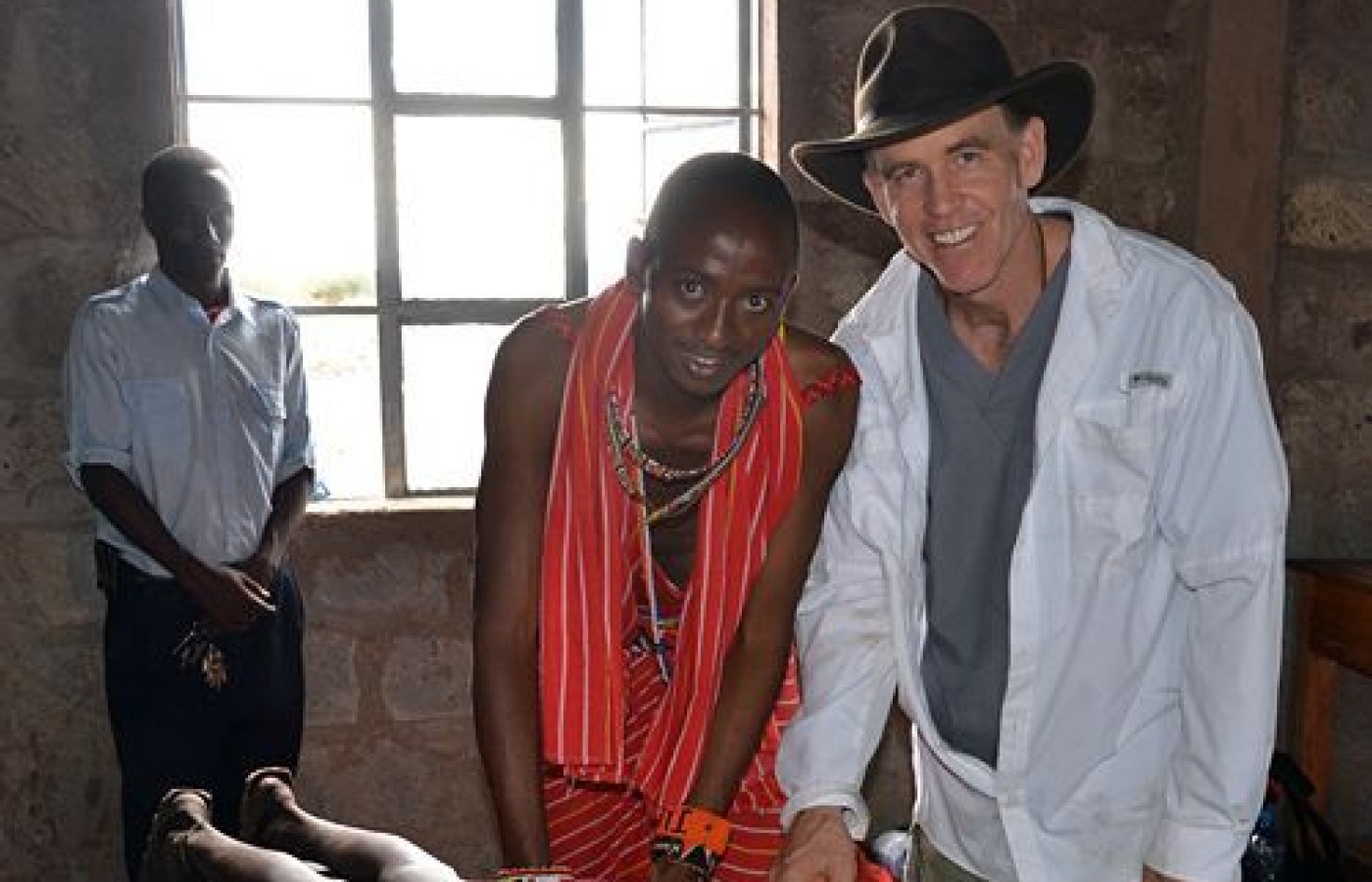Refund requests are an unavoidable part of running a chiropractic practice. Whether a patient is unhappy with their care, believes an adjustment caused harm, or simply changes their mind, these situations must be handled carefully to avoid escalation. While chiropractors are not legally obligated to issue refunds in most cases, there are times when doing so is the best business decision to protect the practice.
First Contact: Bringing Chiropractic to Kenya
Warren Bruhl, DC, DICCP, has a vision of health and healing that transcends his pediatric / family chiropractic practice in Chicago. He is also a founding director of Dreamweaver International, a nonprofit charity providing education, medical and humanitarian services to Kenya and other impoverished nations. In addition, he has developed a charitable arm called Gear for Goals, which brings new and used sports equipment to impoverished children globally. Both of these endeavors are active, to say the least, in Kenya, which brings us to Dr. Bruhl's chiropractic story. Last year, Dr. Bruhl spent two weeks in east Africa, providing chiropractic care to the native Maasai. In doing so, he became the first known DC to lay healing hands on the Maasai. Hear in his own words the challenges and rewards of that trip, along with his plans to develop a regular chiropractic mission rotation and a multidisciplinary hospital in Kenya.
In quiet peace, my hands gently supporting Richard's head, the pain in his body was released. I gazed in the direction of the mountains, visible in all directions, and felt stillness, blessing and thanks. The opportunity to provide chiropractic care on this health care mission to the remote Mount Kilimanjaro valley in Kenya, east Africa, opened enormous possibility. Living in one of the harshest, yet most beautiful scenic wonders in the world, the native Maasai know immense hardship, pain and need.
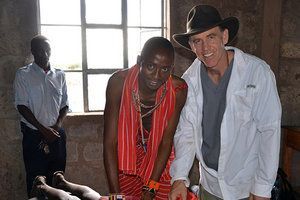
The common is uncommon to Richard and others whom I was fortunate to treat with chiropractic. Water, adequate food, proper shelter, clothing, sanitation, electricity, refrigeration, and transportation are among the common, which are uncommon to the Maasai living in the Mount Kilimanjaro valley. As a result, the physical strain I felt in their bodies was formidable and surprisingly uncared for in any way adequate to make significant change without ongoing education and care by chiropractors. Until my trip, no chiropractor had ever come to this region and laid hands on the Maasai to heal them. Perhaps even more surprising, no one among them had practiced or learned a method to alleviate the sufferings in their own bodies. Need often leads to innovation; it seemed logical that there would have been some personal attempt by the people to have laid hands on the body and gently ease the pain of another. However, I could find no evidence of any hands on-healing care in the two weeks I spent with the Maasai.
My opportunity for this health care mission trip began earlier in 2012 with my first visit to the remote region known as the Kimana Rift Valley, near Mount Kilimanjaro. I was fortunate to have close family who have made this area home over the past 20 years and have developed a network of relationships with medical specialties, schools and community leaders. Gaining the trust of the Maasai is a difficult and often insurmountable task to many outsiders. They are a careful and guarded culture that holds tightly to its traditions.
Traveling to Kenya is daunting and requires endurance, patience and preparation. From Chicago, where I live, the journey takes more than 20 hours and two long flights with layover. Customs and the long entry process into Kenya can be overwhelming, and there seems to be little or no organization to the entry visa process. I waited over two hours in a line to pay my $50 entry visa fee on my arrival. Carrying large bags, including my adjusting table, drew attention and led to opportunistic customs officials seeking money from me to bring my own donated table into their country. Some of the confusion is created by a corrupt order in the government; officials are often paid money in secret.
On my trip this time, I was successful in bringing in all the sports equipment for donation to children and the chiropractic table without any duty charges. However, I realized that saying less and playing down the value of the items, while being sure to explain that everything was used and of little value, was an effective strategy.
Setting Up Camp
| Maasai origin in Kenyais believed to date back to the mid-15th century, when theymigrated from northern Africa along the Nile Valley. Nomadic herdsman, theMaasai traveled with the rains and grass so their cattle herds could grow andprovide necessary food and clothing for their families. Living arrangements forMaasai are fashioned around community and portable mud and cow dung structurescalled enkajis. Thecommunity often consists of four to six families and series of enkajis constructed next toone another in a circular arrangement. The central space serves as an emptyfield set aside for holding the livestock safely in the evening when thefamilies sleep. The villages are called bomas and are the hub of all activity within the community. The Maasai measuretheir wealth by nontraditional standards foreign to Western belief. A Maasaiman is considered wealthy based on the number of cows he owns and the numberof children he is bore. Therefore, a common tradition in the Maasai tribes ispolygamy. Not uncommon, a man may take between two and five wives overseveral decades and have 20 or more children. When taking a wife, men arerequired to have the necessary cattle and resources to provide for additionalchildren’s needs, or the marriage will be judged negatively by other tribemembers. |
Clinic setup was an orchestration of teamwork, as each volunteer participated in unpacking and setting up tents, equipment, tables and chairs in preparation for patient care. Anxious patients waited at most locations for our arrival, with some having traveled medium to long distances to be seen. Typical travel for some mothers with sick children could be up to 20 kilometers (12.5 miles).
Our presence and care was valued and appreciated. For the Maasai, the care of doctors from the United States is regarded highly and our culture is viewed as iconic and revered. Many young and somewhat educated Maasai and Kenyans aspire to visit America and seek education in our institutions, but cannot attain this dream.
In providing chiropractic services, my preference was simplicity in delivery and setup. I brought a portable table donated by Technique Tables in Canada; it served as a lightweight, durable and easy-to-set-up table for this trip. My preferable location, if available, was by the shade of an Acacia tree, out of the intense equatorial sun, which radiates in the midday heat of east Africa. There is something romantic in providing healing to people with just the hands, the heart and the knowledge of the doctor using a table under a single shade tree with a vast desert as the backdrop.
Introducing Chiropractic
As I began to provide care, I utilized local interpreters to aid my explanations to the patients on instruction of movements and relaxation on the adjusting table. The Maasai speak a local language known as Maa, and some speak Swahili. As I worked through the week, I found it helpful to write down some of the common directions, such as"Lie on your stomach or back," "Turn on your side," "Breathe," etc., for patients. However, since some spoke only Swahili and others spoke only Maa, I had to know both languages and the nuances of pronunciation, which proved challenging. The patients seemed to enjoy my desire to speak to them in their native tongue, and onlookers would often laugh at my feeble attempts to speak their language with a Western tongue.
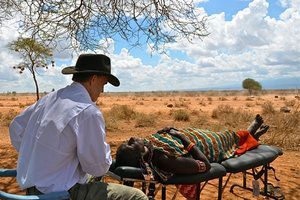
Other challenges requiring flexibility during care included navigating through the vast array of jewelry the women and some of the men wear. Women commonly have five to 10 neck ornaments draped about the neck and two or more large pairs of earrings. When it came to the men, it was a new experience telling a man he had to remove his 2-foot bladed knife from its holster before I could position him on his side and do a proper side-posture adjustment.
That brings up another challenge I worked around during my trip: helping the men and women feel comfortable with the side-lying position of side-posture adjustments while maintaining coverage of their private parts. Since most of the men and women wear no undergarments, they would constantly need to adjust the colorful, robe-like garments they wear (called shukas) to make sure they were covered.
The dirt and flies on their bodies was often considerable, and keeping my hands clean was impossible even with copious amounts of hand sanitizer. At times, I wore plastic gloves if I had to work on women's feet with plantar fascia problems or suspected heel spurs.
Despite these challenges, the response and the gravity of the effect the care had on this population was immense. A local male nurse, who is a Maasai himself and has worked on this patient population for over 20 years, said he had never seen such favorable response to the pain his patients normally endure. He was ecstatic and secured several adjustments himself. He was impressed with the simplicity of the care and the immediate result most patients experienced. Moreover, he expressed a strong desire to learn the methods so he could help patients in my absence and keep forwarding their healing progress.
Long-Term Goals in Kenya
As a long-range vision, I am planning to install chiropractic as a regular therapy available to the Maasai in outreach clinic rotations several times a year. Furthermore, I have been asked by Dr. Smith to develop a chiropractic component in the Mount Kilimanjaro Hospital, which is scheduled to be built in 2013-14.
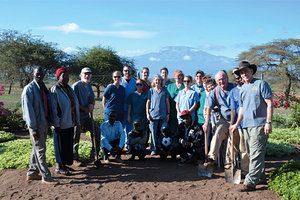
Providing chiropractic care to this patient population in this manner will require strong leadership and attendance by regular visiting teams of chiropractors who desire to serve a patient population in desperate need. Moreover, there may be an opportunity for doctors to seek a rotation in the hospital annually, and local medical personnel may engage in some training to aid their population's need.
We will be returning to Kenya to begin building the hospital in the Rift Valley near Mt. Kilimanjaro later this year. Once completed, it will serve as the most modern and comprehensive hospital for the Maasai of the area. The hospital will feature a multidisciplinary approach to healing focused on natural and holistic wellness, along with traditional medical care. Featured services include chiropractic, osteopathy, emergency medicine, dental, fitness, nutrition, and lifestyle management.
This is a project of Dreamweaver International, a 501(c)(3) charity with offices in Chicago and Kenya. Other projects include establishing an ongoing rotation of doctors who serve the patients of the area from industrialized medical regions. Moreover, we presently operate an accredited college, called the Kimana School of Leadership. It is the only accredited college in the area within 250 miles. This is also a project of Dreamweaver International.
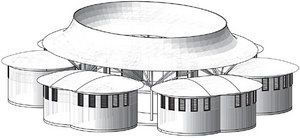
Another plan and execution of resources we are focused on is creating opportunities through sport with our humanitarian program called Gear for Goals. We introduced the game of baseball to Maasai children and plan to develop baseball in Kenya, working toward developing a Little League Baseball program in the region and helping facilitate the spread of baseball through the continent of Africa. Sponsors thus far include the Chicago Cubs and the Schaumburg Boomers baseball programs.
Life-Changing Rewards
My impression after serving with the Maasai has been life changing, and I have felt honored to sit in a place no one has sat before me. Few would desire to care for people who are stricken with disease as the Maasai. In some bomas, 85 percent of the populace has become HIV positive. There is rampant tuberculosis, fungal infections over segments of the body, and bacterial proliferations, and unsightly lesions and dirt often present. But the love, appreciation and simple nature of this people give the ultimate blessing to the healer who is willing to be a blessing to them.
There are often far more rewards and gifts a giver receives in the exchange than the giver provides to their subject(s). The rewards are often felt in the heart and stored as warm and sensitive remembrances. I find myself reflecting on my experience often, and I have gained wisdom, perspective, and desire to be a better man, a more loving humanitarian, and a stronger leader so I can be a force of positive change to improve the lives of the Maasai.
The challenges that lie ahead for the Maasai are strong and the delicate balance of life or death are weighted toward death over life. However, I believe installing chiropractic as a viable health care choice in their system of health management will lead them away from a model that has promoted pill-taking over trust in the innate power of the body to heal. The natural system of balance in nature would favor a more thoughtful approach parallel with a chiropractic model of health care. The opportunity exists now that this door has been opened, and with time, the Maasai too will come to know what many have known throughout the world: chiropractic changes lives.
Dr. Bruhl has practiced pediatric and family chiropractic care for 26 years and holds a diplomate in chiropractic pediatrics. He is the author of The Chiropractor's Exercise Manual and has been featured on ABC News and Parenting Life. Contact him via e-mail at dc4kids@aol.com or dr.bruhl@dreamweaver911.org; visit Dreamweaver International on the web at www.dreamweaver911.org.
